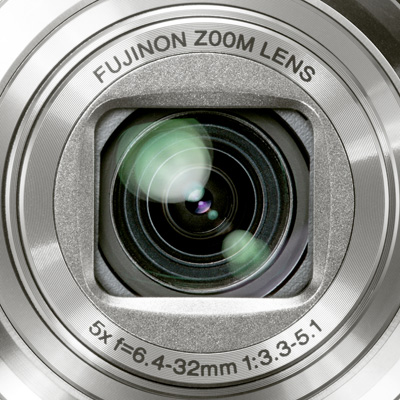This article is more than 1 year old
Fujifilm Finepix F200EXR
Extra sensory perception?
To get to grips with this camera, you really do need to study the instruction manual, which exists only as a PDF file – groan. It’s not that you can’t use the Finepix F200EXR as a point-and-shoot camera, but that it does have its operating quirks.

Simple enough to operate, but there's plenty to explore
A case in point is that you can only set the dynamic range to the maximum 800 per cent when in the EXR Dynamic Range Priority mode. But even then, if the film simulation mode is set to Velvia, you’ll be limited to a 400 per cent maximum. If you’re in Program mode, the maximum Dynamic Range setting is 400 per cent and the top figure corresponds to the ISO speed, i.e. if the ISO speed is 200, the maximum Dynamic Range setting is 200 per cent. Quirky indeed.
We also found the zoom lever a tad sensitive and it was hard to fine focus. But in terms of results, the Finepix F200EXR pretty well delivers the goods. The 28mm lens makes the camera ideal for landscape shots and the 5x optical zoom pulls in the action. Resolution, colour and exposure were generally impressive, although there was a slight tendency to over-expose in Auto mode.
The film simulation mode (which can’t be switched off) gives a slight grainy appearance to the shots. Noise levels are low until around ISO 800, but then they rapidly increase as you bump up the speed. The image stabilisation system is not as effective as others we’ve used, but it does help a little to reduce the effects of camera shake.
There are several options for shooting in low light including, a Night Tripod setting, ISO speeds of 6400 and 12800, plus a slow shutter speed of up to 8 seconds. In testing these, we found that the slow shutter speed gave the best results. The high ISO speeds produced very poor results, with very high levels of noise and extremely low resolution. In a word: useless.

Optically, this compact delivers
We admit to being a bit sceptical about Fuijifilm’s claims for the EXR sensor, but it really does a good job in most cases. The High ISO and Low Noise setting did help reduce noise a little, but was not that impressive. What’s more, it’s limited to a top ISO speed of 1600, which seems odd for a camera offering an ISO 12800 setting. And judging from the results above ISO 1600, these settings certainly need some help, because it's difficult to see why Fujifilm offers them in the first place, as they detract from a good overall performance.
